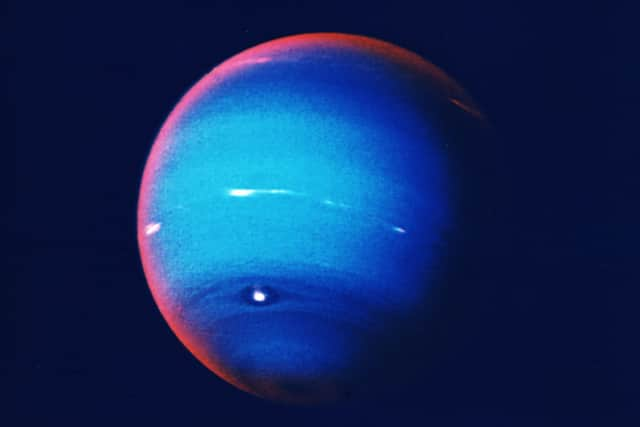Neptune's clouds have suddenly vanished - and it could be due to the Sun
and live on Freeview channel 276
Neptune's clouds have vanished, after starting to fade out of existence back in 2019.
A new study has shown observations of images of the blue planet, taken from 1994 to 2022 suggest Neptune's clouds are nearly gone - except for its south pole.
Advertisement
Hide AdAdvertisement
Hide AdThe research, published recently in the journal Icarus, reveals a connection between the ice giant’s disappearing clouds and the solar cycle.


Researchers assessed images taken from 1994 to 2022 using Keck Observatory’s second-generation Near-Infrared Camera (NIRC2) as well as observations from Lick Observatory and the Hubble Space Telescope. This pattern was found by assessing 2.5 cycles of cloud activity on the icy blue planet.
The data revealed a connection between changes in Neptune’s cloud cover and the solar cycle – the period when the sun’s magnetic field flips every 11 years, causing levels of solar radiation to fluctuate.
When the sun emits more UV light, light clouds appear on Neptune two years later. A correlation between the number of clouds on Neptune, and the ice giant’s brightness from the sunlight reflecting off it was also noted by the researchers.
Advertisement
Hide AdAdvertisement
Hide AdThe planet’s reflectivity increased in 2002, dimmed in 2007, became bright again in 2015, then darkened again in 2020 to the lowest level ever observed – when most of the clouds went away.
This connection has surprised scientists, as Neptune is the farthest major planet in the Solar System, receiving only 1/900th of the sunlight Earth gets.
“I was surprised by how quickly clouds disappeared on Neptune. We essentially saw cloud activity drop within a few months,” study co-author Imke de Pater from UC Berkeley said.
“Our findings support the theory that the sun’s UV rays, when strong enough, may be triggering a photochemical reaction that produces Neptune’s clouds.
Advertisement
Hide AdAdvertisement
Hide Ad“These remarkable data give us the strongest evidence yet that Neptune’s cloud cover correlates with the sun’s cycle.
“We have seen more clouds in the most recent images, in particular at northern latitudes and at high altitudes, as expected from the observed increase in the solar UV flux over the past ~2 years."
However, more research needs to be done, as other factors could play a role in the cycle changes of the brightness of Neptune.
Comment Guidelines
National World encourages reader discussion on our stories. User feedback, insights and back-and-forth exchanges add a rich layer of context to reporting. Please review our Community Guidelines before commenting.
